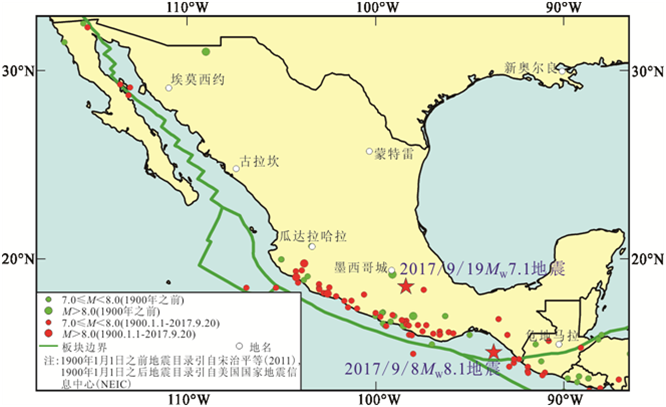博文
从英国人关于“主震”和“余震”的有趣说法谈起
|||
春节前看了一篇文章:
Unified Scaling Law for Earthquakes
Kim Christensen; Leon Danon; Tim Scanlon; Per Bak
Proceedingsof the National Academy of Sciences of the United States of America, Vol.99, No.3, Supplement 1: Arthur M. Sackler Colloquiumof the National Academy of Sciences. Sackler Colloquium on Self-Organized Complexity in the Physical, Biological, and Social Sciences. (Feb. 19,2002),pp. 2509-2513.
这篇英国人写的文章提出且验证了一个统一的尺度律,该律提供了一个评估某个地区在给定截断震级条件下地震发生概率的框架。所谓的“统一律”实质上是把G-R律、大森余震律与断层的分形维数,通过概率分布联系起来。
该文发表在PNAS杂志,貌似“高大上”,但实则是一种数学游戏,就不细说了。在这篇文章中关于“主震和余震”,英国人体现了“实话实说”的的绅士风度:
However,as we shall demonstrate, there seems to be no rigorous scientific method to distinguish whether an earthquake is an aftershock or a main shock, because, according to this definition, thecategorization depends on the length scale, magnitude, and time scale considered.
上面这段话好理解,但看到下面这段话时,我初始感觉“不明觉厉”,但“细思极有趣”。
This view suggests that the Omori Law for aftershocks is a short-term time and small spatial limit of a general hierarchical phenomenon; it states that the only difference between a main shockand an aftershock is the size of the sampling window that one chooses.Fundamentally, a main shock and an aftershock are consequences of the same process.
黑体字的字面意思为“主震和余震之间的唯一区别,在于选择的采样窗口大小。”楞了约5妙后,才算搞明白,确实如此啊。如果某地发生了一次6.0级地震,圈内人通常会认为这是一次孤立“主震”,随后在其附近一般会发生小一点的“余震”。如果观察窗口较小,只能看到“主震”和“余震”。如果不断地放大时空观察窗口,则会有更多的“地震”进来,此时就分不清“主震”和“余震”了。
不信,看看下面这张图,谁能告诉我这些地震之间是神马关系啊?

图1 墨西哥及其邻区发生的M≥7.0地震
http://blog.sciencenet.cn/blog-575926-1077034.html
任何概念必须具有特定的内涵和外延,且具有排他性。如果对某种概念的定义是模糊的、不确定的且有歧义的,则可能说明对某种自然对象的理解有误。
解决“主震”和“余震”的概念定义与判识方法问题,至少需要两个条件,其一是地震区的定量划分,其二是科学的判识方法。
近些年,我们的一系列研究工作表明,地震区某一地震周期发生的最大一次地震(最后一次标志性地震)为主震,其后与之有关的地震为余震,如图2所示。如此,不仅可保证地震概念的逻辑自洽性,而且得到了全球62个地震区震例分析的支持。

图2 地震区地震周期旋回
扩展阅读:
地球何时进入了地震活跃期?
http://blog.sciencenet.cn/blog-575926-1071193.html
https://blog.sciencenet.cn/blog-575926-1100982.html
上一篇:如何发表NI(Nature Index)论文?
下一篇:面上基金申请:切忌贪大求全